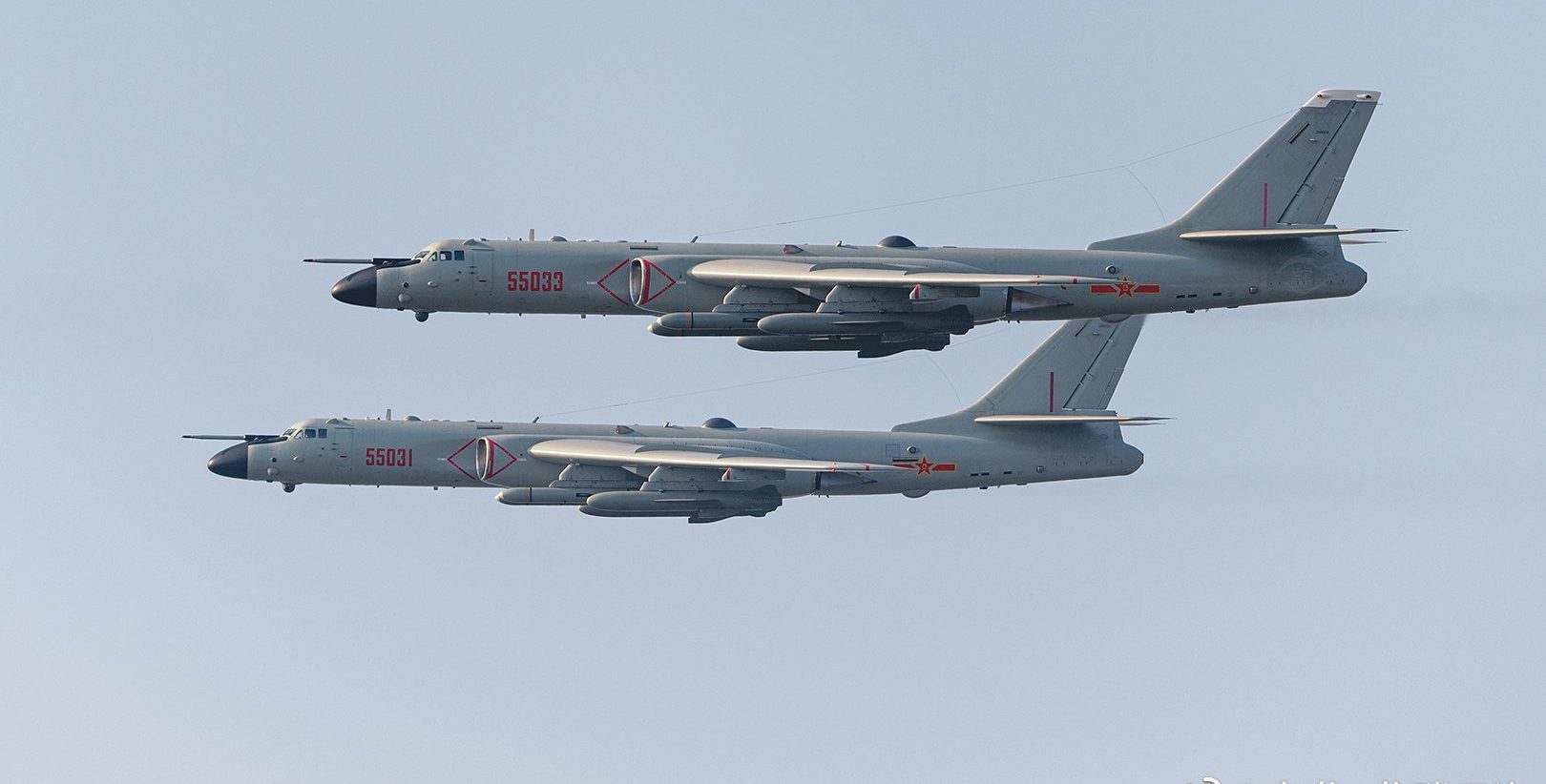China’s H-6K bombers are key to an assault on Taiwan, firing long-range cruise missiles on multiple targets in coordination with naval actions and air dominance operations, based on videos released by the Chinese military.
Rafale Meets Rafale! Indian Air Chief Marshal’s ‘Game-Changer’ Visit To Greece Could Turn The Tide Against Pakistan & Turkey
US Could Lose 1000 Fighter Jets, Lose Its Entire Global Fleet If It Goes To War Against China Over Taiwan – Military Experts
China on Wednesday concluded its unprecedented live-fire drills around Taiwan following the fallout over US House Speaker Nancy Pelosi’s visit.
Announcing that the “joint military operations accomplished all tasks,” the maneuvers saw a few firsts, like firing missiles over Taiwan that landed on its eastern seaboard; holding drills at six different locations around the island with two of them close to Taiwan’s territorial waters; flying its indigenously developed fifth-generation J-20 stealth fighter in live fire exercises for the first time.

Elements like “joint blockade, assault on ground and sea targets, airspace control, joint anti-submarine drill, and integrated logistics and support” clearly indicate China has managed to iron out even the minor tactical obstacles that might crop up in a military intervention.
Thus, an actual military takeover of the island will be merely an extension of the exercises it just concluded.
But in terms of its military equipment, after the J-20, it is the H-6K bomber that is vital to China’s air campaign. Videos and photos show the H-6K leading the Shenyang J-16 (Chinese version of the Su-30), with a role as a literal cruise missile carrier. This will address the threat vital Taiwanese ground military infrastructure will pose to Chinese naval and air assets.
Videos indicated H-6K bombers are simulating attacking Taiwanese targets by releasing cruise missiles. This would include medium-sized fighter bombers like the J-16 in a flexible manner crossing the Taiwan Strait from both the South and the North.
Maintaining pressure by firing a volley of missiles would also exhaust the Taiwanese defense forces of their inventory of Surface-to-Air Missiles (SAM) or force a tactical pause in operations to reinforce their units, which China could exploit to overpower them.
China conducts more military drills near Taiwan pic.twitter.com/5PmDwcbh77
— Sia Da Vinci💎 (@siadevinci) August 9, 2022
Chinese official media reports claim the purpose is to develop joint ground strike and long-range airstrike capabilities between the air force and navy with the support of early warning aircraft like the KJ-500 and KJ-2000.
Videos also showed the H-6K and the J-16, with the former leading such formation and filming the Taiwan coastline and mountain ranges in central Taiwan.
The H-6K bomber can carry four to six CJ-20 cruise missiles or KD-63 cruise missiles of an equal number. Each bomber can be assumed to have practiced multi-missile launch and bombing runs on various targets in different directions in a limited time frame.
The CJ-20 is a Land Attack Cruise Missile (LACM) with a minimum range estimated to be around 2,400 km depending upon the type of warhead – whether conventional or nuclear. Designed to be launched from the H-6K, it can reach all targets in the First Island Chain, where the US holds military bases.
The KD-63 (also the YJ-63), on the other hand, entered service in 2004 and is believed to be the first indigenously developed cruise missile in the Chinese military. Also designed to be fired from the H-6K and the H-6H, it has a smaller range of 200 km and can strike land and maritime targets.
H-6K, used both by the People’s Liberation Army Air Force (PLAAF) and the People’s Liberation Army Navy (PLAN), is the locally manufactured variant of the Soviet-era Tupolev Tu-16 bomber with major upgrades, including Russian-made D-30 turbofan engines.
It also has significant surveillance, reconnaissance, data linking, maritime patrol, and limited early warning capability to enhance situational awareness of China’s attacking forces.
The H-6K can also launch nuclear cruise missiles or nuclear bombs since it is officially recognized as a strategic bomber, but its predominant mission would be air-to-ground and air-to-sea attacks with CJ-20 and KD-63 cruise missiles.
The J-16, much like the US Air Force’s F-15E, is a credible dual-purpose fighter bomber with a significant air-to-ground capability, apart from air-to-air roles.
If videos show the H-6K leading formations of the J-16 means the J-16 will take out tactical targets like anti-aircraft batteries and shore encampments while the latter bombs the bigger strategic targets like air bases and command and control centers.
Being a fighter too, the J-16 provides integral air defense to the H-6K where the former’s own and airborne radars from the KJ-500 and KJ-600 early warning aircraft keep the skies clear.
The JH-7a dedicated ground attack aircraft also becomes important here, serving as an anti-ship and air-to-ground precision strike platform.
The main thrust of the operations is expected to be led by the PLA Navy, possibly undertaking an amphibious operation while also conducting anti-air, anti-ship, and anti-land strikes from both warships and aerial platforms.
The EurAsian Times had analyzed the politico-strategic and military intent behind the Chinese military drills and how an actual military takeover of Taiwan might pan out.
The show of force seems to have achieved its political objectives where Taiwan’s own military drills at the peak of China’s exercises were announced to not wanting to “escalate the conflict.”
There was no political rhetoric from the pro-US and pro-independence ruling Democratic People’s Party (DPP), whom Chinese statements themselves said the goal was to “deter.”
- The author can be reached at satamp@gmail.com
- Follow EurAsian Times on Google News